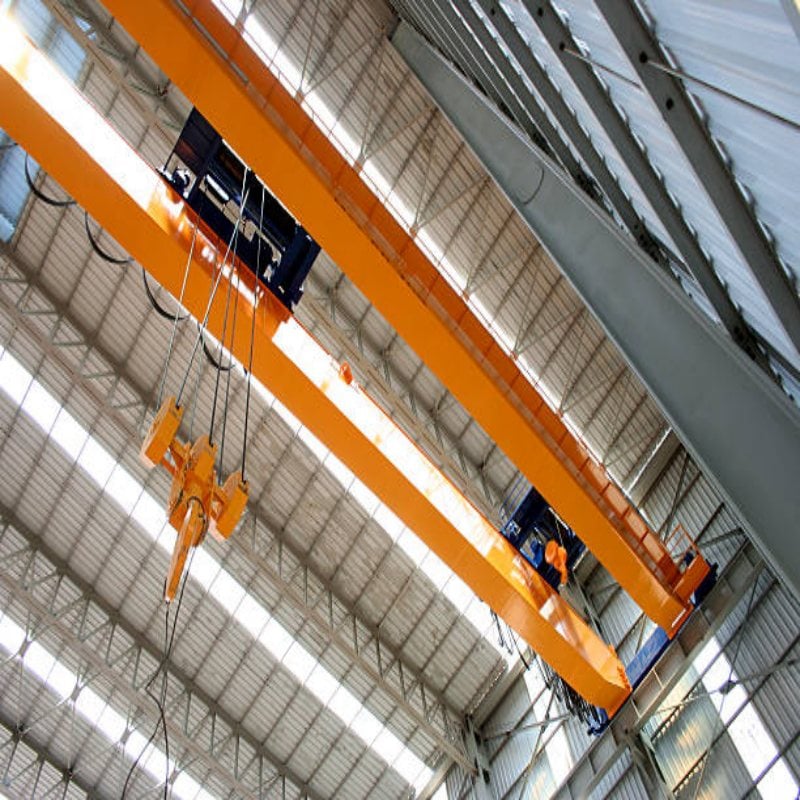Introduction
A vacuum suspended crane is a versatile and efficient lifting device commonly used in industrial settings. It operates by utilizing a vacuum system to create suction and securely lift heavy loads. This article will explore the various aspects of a vacuum suspended crane, including its design, applications, advantages, and considerations for implementation.
Design and Components
A vacuum suspended crane consists of several key components that work together to facilitate safe and efficient lifting operations. The main components include:
- Vacuum pump: This generates the necessary suction power to lift and hold the load in place.
- Vacuum pad or cup: The part of the crane that comes into direct contact with the load. It is designed to create a seal and maintain suction.
- Control system: This allows the operator to control the lifting and releasing of the load.
- Suspension system: The framework that supports the vacuum pad and the load, ensuring stability and balance during lifting.
Applications of Vacuum Suspended Cranes
1. Manufacturing Industry: Vacuum suspended cranes are commonly used in manufacturing facilities to handle and transport heavy materials such as metal sheets, glass panels, and wooden boards.
2. Warehousing and Logistics: These cranes are ideal for loading and unloading goods from trucks or containers, as well as moving items within a warehouse.
3. Construction Sector: Vacuum suspended cranes play a crucial role in the construction industry, aiding in the installation of large glass windows, prefabricated walls, and other building materials.
4. Automotive Industry: They are used for handling car body panels, windshields, and other automotive components during production and assembly processes.
5. Aerospace Sector: Vacuum suspended cranes are employed in the aerospace industry for lifting and maneuvering delicate and sensitive equipment.
Advantages of Using Vacuum Suspended Cranes
1. Increased Efficiency: Vacuum suspended cranes enable faster and more precise load handling, reducing the time required to complete tasks.
2. Enhanced Safety: The secure grip provided by the vacuum system minimizes the risk of load slippage or accidents during lifting and transportation.
3. Versatility: These cranes can handle a wide range of loads, shapes, and sizes, making them suitable for various applications across different industries.
4. Cost Savings: With their ability to handle heavy loads efficiently, vacuum suspended cranes can help reduce labor costs and increase overall productivity.
5. Improved Ergonomics: By eliminating the need for manual lifting, these cranes reduce the physical strain on workers, contributing to a safer and healthier work environment.
Considerations for Implementing Vacuum Suspended Cranes
1. Load Capacity: It is crucial to choose a vacuum suspended crane with an appropriate load capacity to ensure safe and efficient lifting operations.
2. Surface Compatibility: The vacuum pad or cup should be compatible with the surface of the load to create a reliable seal and maintain suction.
3. Maintenance and Inspections: Regular maintenance and inspections are essential to ensure the proper functioning of the crane and to address any potential issues promptly.
4. Operator Training: Proper training should be provided to crane operators to familiarize them with the equipment and ensure safe operation.
5. Environmental Factors: External factors such as temperature, humidity, and dust levels can affect the performance of a vacuum suspended crane. Consider these factors when implementing the crane in specific environments.
Conclusion
Vacuum suspended cranes offer numerous benefits in industrial settings, including increased efficiency, enhanced safety, versatility, cost savings, and improved ergonomics. With their ability to handle various loads and applications, these cranes have become indispensable in manufacturing, warehousing, construction, automotive, and aerospace industries. However, careful consideration should be given to load capacity, surface compatibility, maintenance, operator training, and environmental factors when implementing a vacuum suspended crane. By doing so, businesses can optimize their lifting operations and improve overall productivity.

